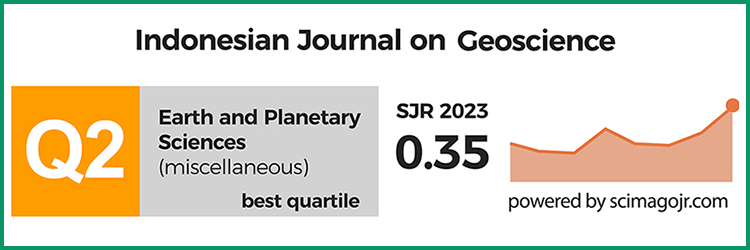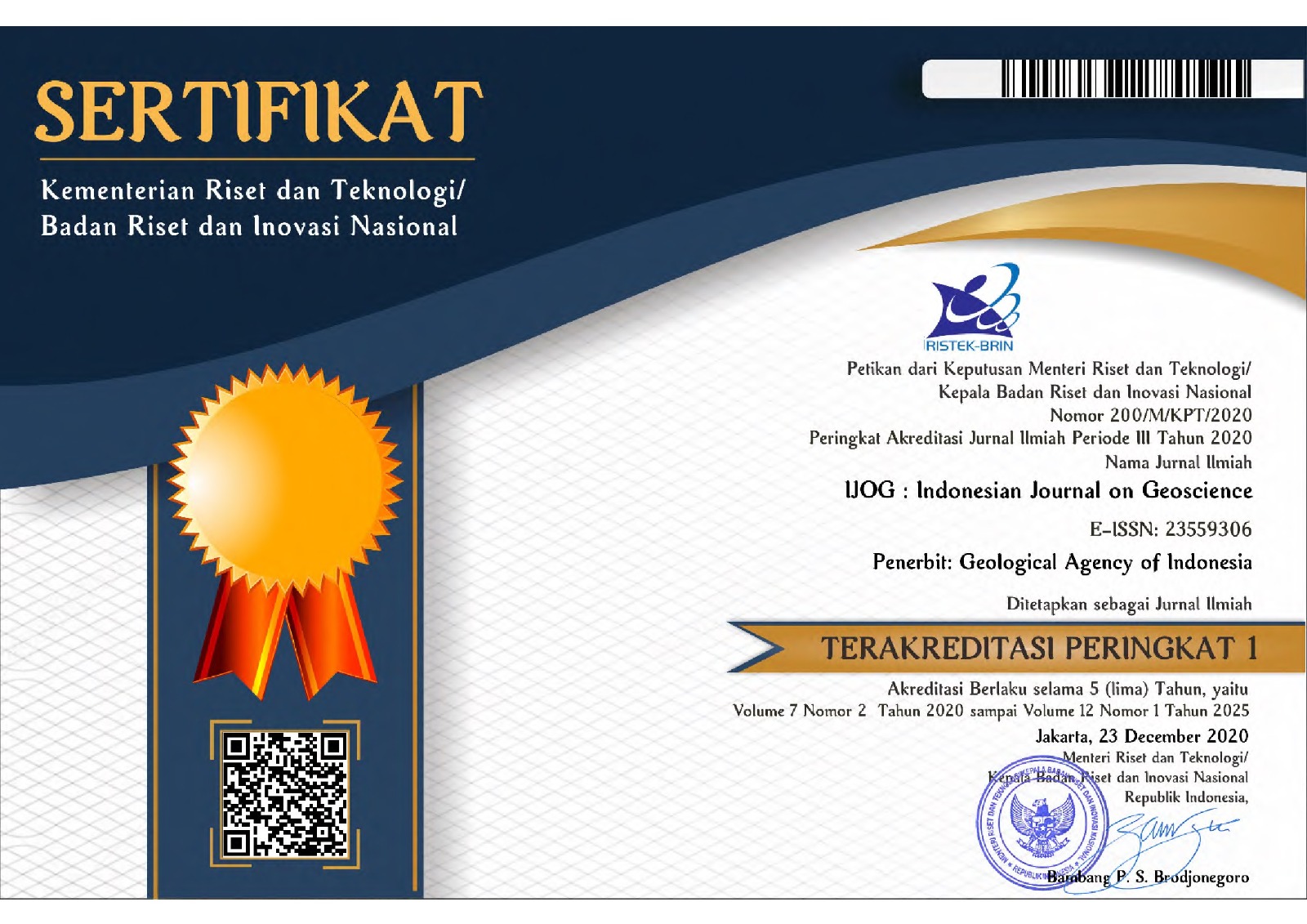The Occurrence and Genesis of Silicified Coals in Tanjung Redeb, Embalut, and Loa Kulu, East Kalimantan, Indonesia
DOI:
https://doi.org/10.17014/ijog.9.1.27-43Abstract
DOI:10.17014/ijog.9.1.27-43
The occurrence and genesis of silicified coals in Tanjung Redeb, Embalut, and Loa Kulu have been described and reconstructed by means of petrography and geochemistry. The silicified coals are black, hard, and contain dispersed fine-grained silica minerals. Silica (SiO2) contents vary from 58 to 76%, and LOI (mostly represents organic matter) ranges from 23 to 40% of the bulk silicified coal samples based on the ICP-INAA analysis. Microscopic examination shows the presence of quartz, chalcedony, and amorphous opal. Silicification occurs both as layers and nodules within the coal seams. The layer type is usually thin layers (<25 cm) near the top and bottom of the seams, and they can spread horizontally up to 3 m. Nodules occur randomly in the coal seams having a diameter from several centimeters to 1 m. Further microscopic investigation shows that preserved cellular structure is more commonly observed in the layered silicified coal samples. This may suggest that the layered silicification occurred relatively early in the coal seam diagenesis, while the nodule silicification took place during later diagenesis. The coexistence of silica polymorphs in some samples may indicate the presence of multiple silicification stages during coalification.



















